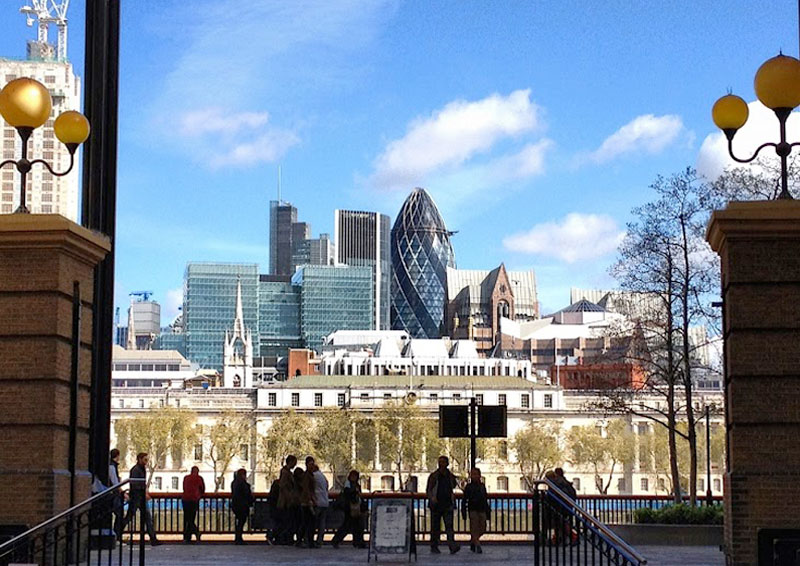City
A city is a human settlement with a large population. While cities have been a feature of human civilisations for many centuries, they have only become a predominant way of life as a result of industrialisation, with rapid urbanisation meaning that more than half the world’s population now living in cities. This figure is predicted to rise to more than 70% by the second half of the 21st century.
There are a range of different definitions and ways of categorising cities depending on the data-analysing organisation, census records or country. Cities can be determined by the number of inhabitants, the role it plays within a larger political context, the role it plays in terms of being a hub for the larger surrounding area, education, religion and so on.
In the UK, city status traditionally depended on the presence of an Anglican cathedral. It was not until 1889 that this requirement was dropped. The UK’s official criteria for defining a city today is not completely clear, but those which have been in place since 1907 specify that it must contain at least 300,000 inhabitants, have a good record of local government, and have a distinct identity that is the centre of a wider area. Other definitions suggest city status can be associated with having a cathedral or a university, a particular form of local government, or simply having a large population. More recently, city status has been granted through a series of competitive bids, managed by the Ministry of Housing, Communities and Local Government.
Other ways of defining a city include:
- Municipality - This is the political definition of a city. For example, London is made up of 32 boroughs and the City of London; New York is made up of 5 boroughs; Paris is made up of 20 arrondissements.
- Urban area - This can refer to the urban sprawl of a city, but it is unclear as to whether features in between built up areas like parkland and forests are to be included.
- Metropolitan area - The effective economic footprint of a city, typically measured by commuting patterns. However, this can include a large number of smaller towns and villages that consider themselves separate from the city in question.
- Megacity - This refers to metropolitan areas with a total population of more than 10 million people. The definition of what constitutes a megacity generally refers to the population of an urban agglomeration, that is, it includes people living in the immediate suburbs outside of the established border of the city.
- Smart city - Defined in PAS 180: 2014 Smart Cities. Vocabulary as '...the effective integration of physical, digital and human systems in the built environment to deliver a sustainable, prosperous and inclusive future for its citizens.'
- Garden city - The Town and Country Planning Association (TCPA) suggest, that a garden city is a ‘holistically planned new settlement which enhances the natural environment, tackles climate change and provides high quality housing and locally accessible jobs in beautiful, healthy and sociable communities’.
For more information see: Types of city.
A suburb is an area on the edge of a large town or city, typically residential in character. The term ‘suburbs’ is thought to derive from the Latin ‘suburbium’ in which ‘sub’ means ‘under’ and ‘urbs’ means ‘city’.
The growth of some cities is restrained by a 'green belt'. Green belts establish a buffer zone between urban and rural land, separating town and country and preserving land for forestry, agriculture and wildlife where environmental conditions can be improved and conservation encouraged.
[edit] Related articles on Designing Buildings
- City centre.
- Compact sustainable city.
- Conurbation.
- Densification.
- Engineering Smart Cities.
- Garden cities.
- Gentrification.
- Global smart cities market.
- Green belt.
- Hamlet.
- Megacity.
- Region.
- Smart cities need to find some smarter answers.
- Smart city.
- Suburb.
- The compact sustainable city.
- The Living City: Rethinking our role in the Digital Age.
- Town.
- Twin cities.
- Types of city.
- Types of place.
- Urban.
- Urban fabric.
- Urban sprawl.
- Village.
Featured articles and news
Infrastructure that connect the physical and digital domains.
Harnessing robotics and AI in challenging environments
The key to nuclear decommissioning and fusion engineering.
BSRIA announces Lisa Ashworth as new CEO
Tasked with furthering BSRIA’s impressive growth ambitions.
Public buildings get half a million energy efficiency boost
£557 million to switch to cleaner heating and save on energy.
CIOB launches pre-election manifesto
Outlining potential future policies for the next government.
Grenfell Tower Inquiry announcement
Phase 2 hearings come to a close and the final report due in September.
Progress from Parts L, F and O: A whitepaper, one year on.
A replicated study to understand the opinion of practitioners.
ECA announces new president 2024
Electrical engineer and business leader Stuart Smith.
A distinct type of countryside that should be celebrated.
Should Part O be extended to existing buildings?
EAC brands heatwave adaptation a missed opportunity.
Definition of Statutory in workplace and facilities management
Established by IWFM, BESA, CIBSE and BSRIA.
Tackling the transition from traditional heating systems
59% lack the necessary information and confidence to switch.
The general election and the construction industry
As PM, Rishi Sunak announces July 4 date for an election.
Eco apprenticeships continue help grow green workforce
A year after being recognised at the King's coronation.
Permitted development rights for agricultural buildings
The changes coming into effect as of May 21, 2024.






















